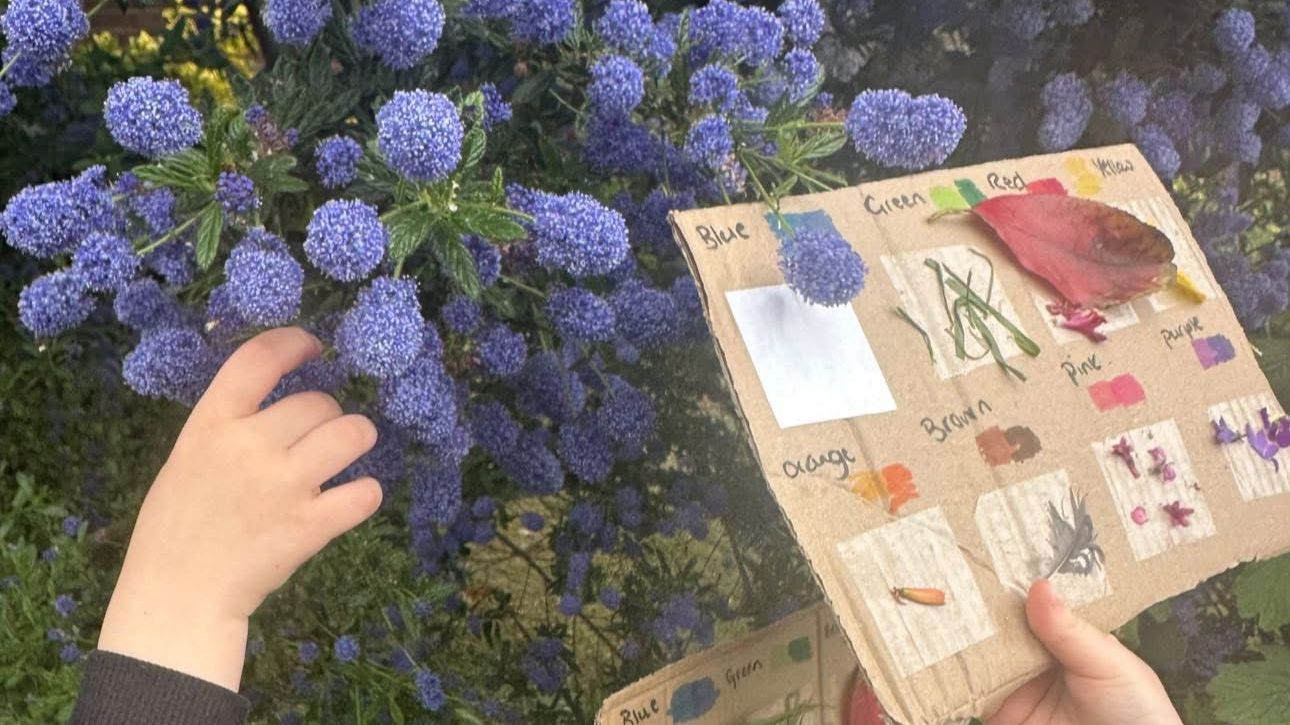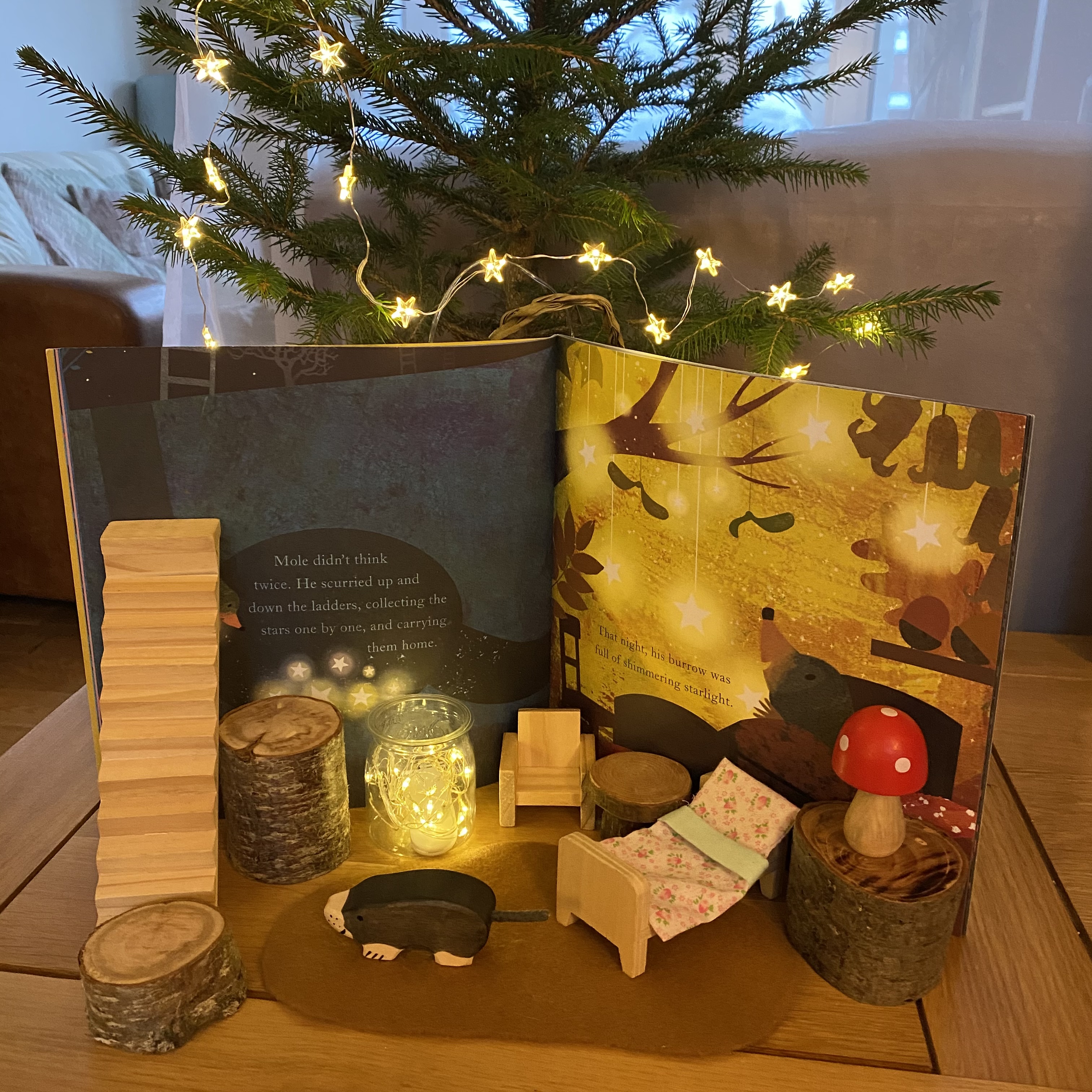Blog
“Strive to make everyday the best day of your life, because there is no good reason not to.” Hal Elrod
Hygge in a Small Setting

You don’t need a large, purpose-built classroom or an endless supply of resources to bring Hygge to life.
In fact, some of the most magical early years environments are the smallest ones—because in small spaces, there’s often more connection, more intimacy, and more attention to detail.

Hygge is about creating an atmosphere where children (and adults!) feel calm, safe, and at home. That can happen in:
🪵 A cosy corner with soft lighting and cushions
🧺 A wicker basket with a few carefully chosen natural treasures
🫖 A shared cup of warm tea and a story under a blanket
🌿 A tiny outdoor area transformed with pots of herbs and a bird feeder
It’s not about how much you have—it’s about how it feels to be there.
Small settings can hold big magic.
To check out my Hygge training head to my website www.hyggeintheearlyyears.co.uk
#hyggeintheearlyyears #hyggespaces #danishway #enablingenvironments #hyggeclassroomenvironment #hyggechildcare #hyggehomeschool
@theflowercottage110 thank you for sharing with us ...
Finding a Hygge Setting or School for Your Child

Are You a Parent Looking Around Early Years Settings or Schools for Your Child?
As a parent myself, I know how big and sometimes overwhelming this decision can feel. You want to find a place where your child feels safe, seen, and celebrated—a setting that nurtures curiosity and joy.
Here are a few questions I always like to ask when visiting a new setting:
🌿 How much time is dedicated to play?
🌦️ How often are children outdoors, and in what ways do they engage with nature?
🌟 How are children’s interests and questions woven into daily learning?
📚 What does the modern curriculum look like here, and how is it delivered?
💛 How is the whole child—their emotions, creativity, and uniqueness—celebrated?
🏡 How do the spaces feel as you walk through them? Calm, welcoming, inspiring?
🎨 What kinds of materials and resources do children use?
— Are they given creative freedom?
— Can they explore open-ended, natural, or recycled materials?
Choosing the right setting is about more than ticking boxes—it’s about fi...
Child-Led Adventures: The Heart of Our Everyday

In this weeks blog post I wanted to offer you a little glimpse into life at one of my fabulous Hygge Chlldminder Settings...
No two days are ever quite the same here — and that’s exactly how we like it. At The Young Ones, the children lead the way. They guide our direction with their questions, their curiosity, and their joy. As anyone who works with young children knows, learning rarely moves in straight lines. It twists, it turns, it pauses to watch a worm wriggle across the path or races ahead in bursts of energy and inspiration. But within that beautiful unpredictability, we have a rhythm — a gentle structure that grounds us. Our core routines are woven through every day like a reassuring thread. We come together around the table for family-style meals, share stories, practise daily mindfulness, enjoy movement and yoga and take time for important self-care like brushing our teeth. These moments are never rushed. They're part of our wider approach: to protect childhood, not hur...
Hygge in Reception Case Study

I read a book called ‘The Little Book of Hygge’ by Meik Wiking and was intrigued by the
meaning of hygge. I researched the internet and came across your website. I felt excited
about a different way to approach teaching reception children. I talked to my head teacher
and my colleagues about my ideas and feelings. As I changed the classroom, I had a new
energy for teaching. I felt motivated rather than overwhelmed.

I often smile when people come in to the classroom and mention how calm and cosy it feels.
I am proud of how my classroom enables children to learn in an unrushed, nurturing way. I
used to make the provocations for the children to use but now I include them in the process.
When a child came in with some feathers to add to a provocation, it dawned on me that it is
their learning experience, a journey through their imaginary world and I should include them
in the process.

At times, managing behavioural issues in the class has been challenging. However, I believe
the calm environment I ...
Are invitations to play becoming the same as teaching from themes?

Not necessarily. An invitation to play is often open-ended, sparking curiosity and child-led exploration, whereas a new theme can be more structured and adult-driven. However, invitations to play should be used intentionally and sparingly to avoid taking over the whole environment.
 Key Points for Reflection and Rebalancing
Key Points for Reflection and Rebalancing
1. Intent vs. Impact
• Ask yourself: Why am I setting this up?
Is it to introduce a skill, a theme, or to enrich curiosity?
• Then ask: What was the children’s actual response?
Did they engage meaningfully, or did they ignore it?
This helps separate teacher intention from child impact.
2. Too Many Invitations = Too Much Noise
• Overloading a space with multiple setups can actually overwhelm rather than inspire.
• Sometimes, one carefully thought-out invitation is more powerful than five visually appealing ones.
Try leaving more blank space for children to build their own ideas.

3. Continuous Provision as the Core
• Revisit yo...
Hygge and Food

We love eating outside all year round but in an early years setting or school the warmer months of the year do make things a little easier.
I always find that eating outside in nature is a great way to simply slow down. It can be a picnic in the woods, a snack on a walk at the side of the river or simply bringing your snack table outside into your outdoor provision. It doesn’t need to be fancy!
We love growing fruit and vegetables around our outdoor play spaces. There is something wonderful about spotting a child in the summer months barefoot, mid play and selecting a tomato from the garden then choosing a quiet place to sit and eat it fresh from the vine. Think of all the sensory input and conversations you can have while eating in nature, or simply just having stillness and nature sounds when you eat which is so soothing.
School mealtimes has always been a bug bear of mine and working with schools and settings to make it a more enjoyable experience. You can find out more about this ...
A Hygge Learning Space

The popular Danish term “Hygge” which features in the Oxford dictionary is described as ‘ Esp. with reference to Danish culture: a quality of cosiness and comfortable conviviality that engenders a feeling of contentment or well-being; contentment from simple pleasures, such as warmth, food, friends, etc.’
With the Scandinavian countries of Finland, Denmark, Sweden and Iceland consistently holding the top places for being the World’s Happiest Countries it’s no wonder we’ve all been wondering how we can have our own piece of hygge.
The popular trend has seen us adding fairy lights to our living room in a hope that it would make us all feel a bit more joy!....but maybe it’s failed to make you any happier.

This is because hygge is so much more than adding a string of twinkly lights. It’s about creating an environment where those within it feel connected, settled and at peace.
In order to create those feelings of contentment we can explore some changes to our spaces. We might add t...
Buttercup Play Ideas!

Ah the fields are bright and yellow with the delight of buttercups! I have such fond childhood memories of spending time in the uncut fields near my house.
Whilst the buttercups are appealing, please take care as they are toxic if eaten and it's always best to handle with garden gloves on to reduce the risk of skin irritation.
Here are some simple Buttercup Activity Ideas that you can enjoy over the next few weeks....
1. Play hide and seek in the long swishy grass and buttercups

2. Choose a spot to just sit and observe them. Who visits them? How do they smell? Notice their shiny and reflective petals. How do you feel when you sit amongst these? Why not take a picnic?
3. Run free through a field of buttercups. Feeling the buttercups across your hands as you run.
You might be wondering where all the fancy resource set ups and invitations to play are here. Have we missed them out of this blog post?
No!
I often get asked ,'Am I not doing my job well if I don’t have lots of inv...
Hygge in a Small Setting Case Study

Bringing Hygge into Happy Hearts Home: Creating a cosy and nurturing environment for young children.
When I first discovered the concept of hygge, I felt an instant connection. The idea of creating a calm, comforting space full of warmth and belonging aligned so closely with how I wanted children to feel in my care. As a childminder, I’ve always aimed to provide a home from home environment, but a hygge approach helped me to take this to a deeper level. It encouraged me to slow down, simplify and truly tune in to what children need to feel safe, nurtured and grounded.
In early childhood, emotional security lays the foundation for all learning and development. When children feel calm, connected and safe they are more able to explore, play and build positive relationships. I’ve come to realise that setting doesn’t need to be filled with noise, colour, or constant activity to be stimulating. Sometimes, the most powerful learning happens in stillness, in moments of shared warmth,...
Hygge in a Packaway Setting

I started my Hygge journey because I have an interest in creating a more cosy and comfortable indoor and outdoor environment to help the children feel safe and secure when in my setting, just as they would in their own homes. And to see if it will help aid their development. Something that I do find difficult is that I am a pack away setting I found it quite difficult to find the correct decor that could easily be put away after each day.
Carpet Area
I started with a focus on my carpet area, as I felt it was quite colourful, and was not a very inviting space for quiet or reading. To help this I have stopped putting on the big lights and started to put a warm light lamp, which I have put on top of a wooden crate which I then use to put the books inside. I have also bought some hessian leaf pillows and soft fluffy blankets to create a cosy area. To make the carpet area feel more like the children’s homes, I asked the parents to bring in some family photos, which I put out around the se...





